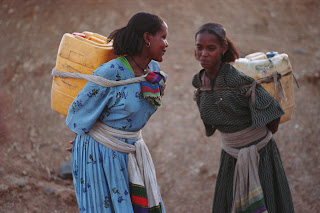My topic for the month of October is animal protection and conservation. I was inspired to take action by the recent tragedy with the private owner in Ohio. For reasons still unknown, the owner "set free" an estimated 55 exotic animals before committing suicide. Sad to say, only six animals were safely captured, leaving 49 animals forced to be killed due to the posed threat to public safety. Among the animals killed in ohio by sheriff's deputies were 17 lions, 18 rare Bengal tigers, six black bears, two grizzlies, a wolf, a baboon and three mountain lions. This incident has caused enormous controversy over private exotic animal ownership in the U.S, as several states still lack regulations. By making such private ownership illegal, tragedies like the one in Ohio can be averted in the future. Signing petitions and writing letters to state leaders who have yet to enforce these laws is a great place to start helping.
More information on this story:
For the protection and conservation of wildlife throughout our planet, the organization I chose to support is the World Wildlife Fund (WWF). The World Wildlife Fund's mission is to conserve nature and reduce the most pressing threats to the diversity of life on Earth. The WWF works with multilateral and bilateral agencies to promote sustainable development in the world's poorest countries. Its aims are threefold--to protect natural areas and wild populations, to minimize pollution, and to promote efficient, sustainable use of natural resources.
How they spend their money:
83% of expenses go towards conservation projects
5% of expenses go towards administration
12% of expenses go towards fundraising
My donation in support of the WWF this month was a "symbolic" one. The WWF has excellent ways to support their organization and efforts, one of which is by "adopting" an animal. A symbolic adoption supports WWF's global efforts to protect wild animals and their habitats. Not only is this a great gift for any age, you know your money was well spent. You can subscribe to donate at different levels for each animal and your money will be used in a variety of ways appropriate for your particular animal, its habitat an level of risk. With tribute to the tragedy in Ohio and loss of one of our world's most breathtaking creatures, I chose to symbolically adopt a tiger.
My monetary donation will contribute to the following:
- Restoring fragmented areas of habitat so tigers can move between them
- Strengthening anti-poaching patrols around nature reserves
- Establishing programs to increase prey numbers
- Reducing poaching and illegal trade of live tigers and tiger parts
- Ensuring conservation laws are enforced
Why are species endangered?
Animals and plants face a large number of different threats with many of them being a direct result of human activity. Some of the most common threats include:
- Habitat loss and habitat fragmentation - The ever-expanding human population constantly requires additional space and resources. Land is being cleared to harvest products such as timber as well as to make way for human settlement, agriculture and transport links.
- Hunting and Poaching - A wide variety of animals have been hunted or fished beyond sustainable levels and now face possible extinction. Species such as the tiger are often hunted because they provide a resource such as food, or part which are used in traditional 'medicine'. However, some species such as the cheetah, have been persecuted after gaining a negative reputation for feeding upon livestock or crops or posing a threat to human safety.
- Invasive species - Humans have introduced non-native species (both intentionally and accidentally) to a wide variety of habitats, often with devastating consequences. Introduced species may prove highly adaptable and out compete native species for resources. Introduced predators can decimate local species, which are not adapted to avoid predation, for example ground dwelling birds like the kakapoo.
- Climate change - Droughts, ocean acidification, the loss of sea ice and an increase in storms and extreme weather events can all threaten species' survival. Sedentary species like plants or specialist species, which inhabit small ranges or islands, or those with specific habitat requirements are particularly vulnerable.
- Disease - Small populations, especially those that are limited in terms of genetic diversity are particularly vulnerable to disease. Disease can often be spread by domestic animals or accidentally introduces by humans traveling from an affected area to one which had not previously been exposed.
- Collection/ pet trade - Many animals and plants, such as the Venus flytrap, have been collected form the wild beyond sustainable levels to be sold through the pet trade or be kept in private horticultural collections.
- Pollution - Acid rain, heavy metals, pesticides, plastic waste and oil spills all harm the environment and put species at risk. Chemicals are particularly harmful to species that live in water.
How can you help?
Along with supporting conservation organizations, there are some simple steps that everybody can take to help protect the natural world and the species in it. Here are some ideas:
- Recycle - Help protect the Rainforest - recycling one ton of paper can save 17 trees and preserve the habitat of a whole host of endangered species.
- Choose sustainable products - Make sure that all the products you buy are sustainably sourced, from food and paper to timber.
- Make your voice heard - petition for change! Many campaigns to help wildlife are underway but they need your support.
- Spread the word - If you are enthusiastic about saving species then why not encourage your friends and family to learn more.





